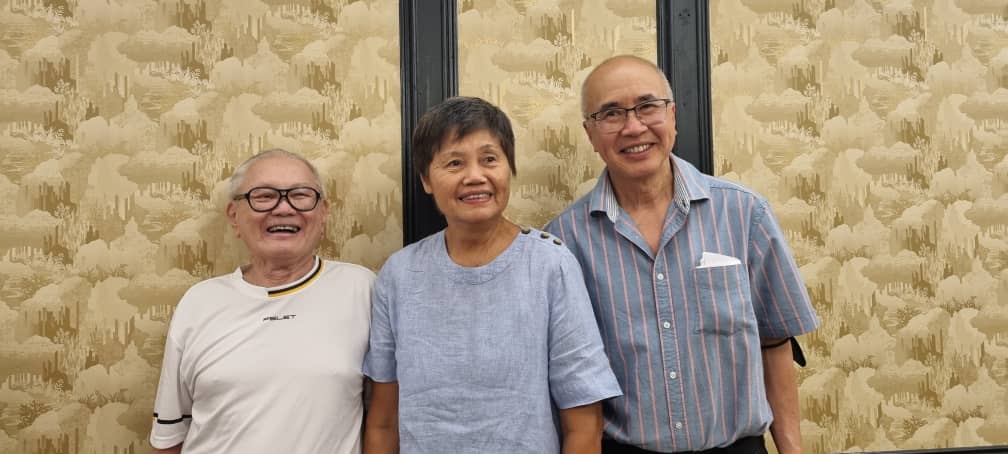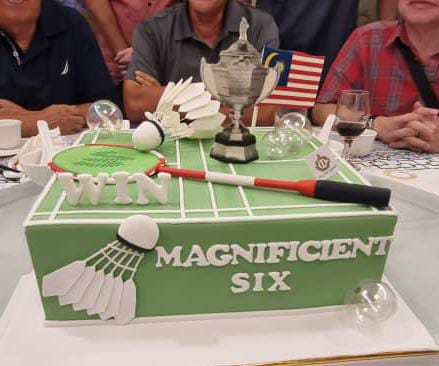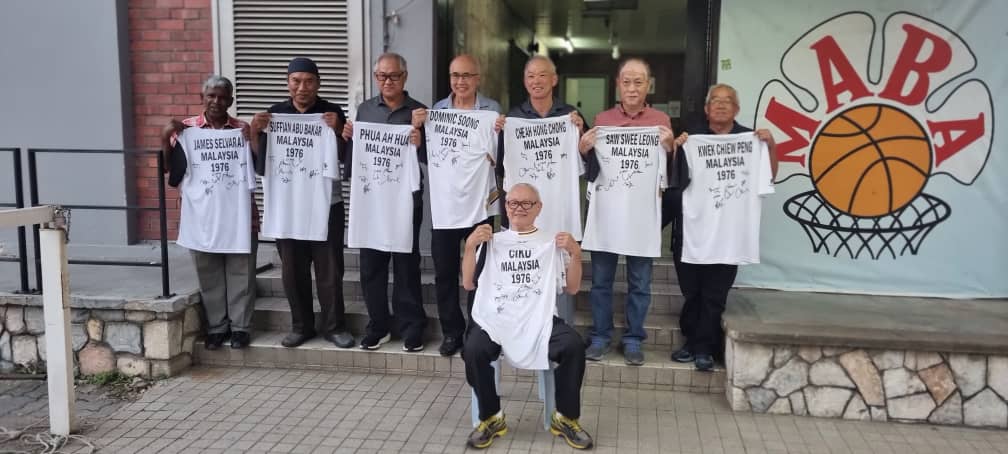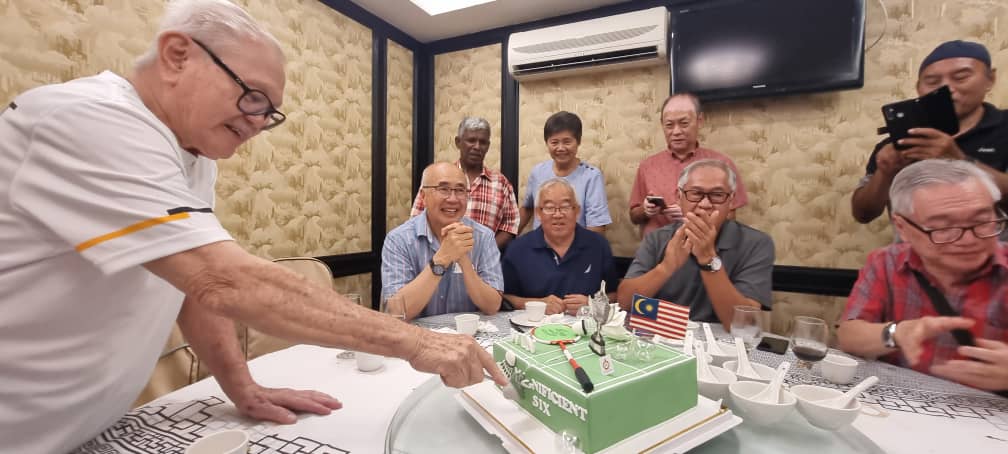by Yong Soo Heong
I was recently in the halo-ed company of some our Malaysia’s best shuttlers at one time when
a reunion of the 1976 Thomas Cup squad took place in Kuala Lumpur.
Although there were altogether nine of them in one way or the other, a coffee table book to
to commemorate their exploits was entitled: Malaysia Thomas Cup – The Magnificent Six
1975/1976.
I gathered that the magnificent six specifically referred to my then badminton-playing contemporaries —
Saw Swee Leong (Penang), Phua Ah Hua (Kelantan), Dominic Soong (Perak), Moo Foot Lian, Cheah Hong Chong and Datuk James Selvaraj (all Selangor) who were featured in most, if not all, of the battles.
The others were Suffian Abu Bakar (Perak), Kwek Chiew Peng and Lim Cheng Hoe (both Negeri
Sembilan).
It was not without reason that the reunion was specially held at Pik Wah Restaurant, located in
the famed MABA House, then a popular hostel for sportsmen and sportswomen, just a stone’s throw from Stadium Negara, the venue of many badminton tournaments and pop concerts half a century ago.
The “boys” had also dined at Pik Wah on special occasions. And the choice of MABA House was utterly significant because its hostel rooms had housed the players during long periods of centralised training.
It was also to coincide with the brief return of Dominic, who is now domiciled in Ottawa, Canada as a
badminton coach, for an overdue homecoming. So, off they trotted along to see their old hostel
rooms.
“The rooms are almost like what they were before,” says Hong Chong of their trip down memory lane. He remembers the rooms being spartan but adequate enough for them to stay for long periods away from home.
With the exception of Cheng Hoe, who is said to be overseas, the get-together that took place 47
years after the 1976 Thomas Cup Finals was an occasion for the players to reminisce about “the good old times”.
Things like having to live on meals costing less than RM3 each at the coffee shops in Jalan Sultan or having Camp Commandant Moe Chin Kuat (affectionately known as Ciku) who made sure that they slept and woke up early to train at Stadium Negara.
Despite Ciku’s watchful eyes, some managed to sneak out without a trace for the not-to-be-missed movies at the nearby Rex Cinema but only to be caught by him as he had left his room door ajar opposite the lift! There was no escaping Ciku’s attention no matter how late it was.
Amidst the camaraderie among them that night, there were also revelations that one of the players was a
habitual MC (medical chit) seeker from the team doctor in order to escape from the daily grind.
Come to think of it, that player concerned actually lived a stone’s throw from MABA House!
In the book (which was almost identical to a video clip on the same subject), Ciku recalls: ”The 1976 Thomas Cup team members were a relatively unknown force. They had to shoulder the responsibility for the nation as most of the experienced star players had retired.
“I bear witness to the arduous training and rigours. It was blood, sweat and tears as they motivated themselves. No one gave them a second look when they arrived in Bangkok for the Final Rounds. Everyone saw them as cannon fodder and dismissed them with a wave of the hand. They were (deemed as) rookies to be slaughtered.
“This dismissal was an advantage and spurred them on. There was no pressure on them but the
boys were determined to produce true fighting spirit.”
Other than Ciku who watched over the build-up of the players’ physical fitness, the tactical
coaches were Michael Chan Looi Chong, Lee Guan Chong and the late Datuk Punch Gunalan.
So, how did they fare at a time when the Thomas Cup was played over a nine-match format — four
matches on Day One and five matches on Day Two?
In the Asian zone’s first preliminary round against Singapore, there were some sportswriters who boldly wrote that the relatively young and inexperienced Malaysian team could lose to their neighbours, especially when two Malaysian players were injured.
And Singapore then had some good players in Ng Chor Yau, Lee Ah Ngo, Tan Ban Chew, Tan Eng Han,
Yeoh Ah Seng and Kok Peng Han!
But something came in Malaysia’s favour as the Singaporean team decided to go on a playing
tour of China (perhaps to sharpen their skills?) before their encounter in the island republic. The
Singaporeans asked for a later date so as to reacclimatise.
The postponement bought valuable time for our injured players to recover. The end result was
that Malaysia thrashed Singapore 8-1.
In our next match at Ludhiana in Punjab against India, many thought all was lost when Malaysia
trailed 1-3 after the first night. The Indians were a formidable force with then rising star Prakash
Padukone and his teammates included Dinesh Khanna, Partho Ganguli, Asif Parpia, Devinder
Ahuja and Iqbal Maindargi. But Malaysia miraculously squeezed past India 5-4 after all nine matches
were played!
In the third preliminary round against Japan played in Kuala Lumpur, Malaysia triumphed 6-2
after leading 3-1 on the first night. Japan were then led by an ageing Ippei Kojima and his team
mates included Kinji Zeniya, Masao Tsuchida, Shoicho Togano, Nobutaka Ikeda and Yoshitaka
Lino.
Malaysia were up against New Zealand in the first round of the Finals in Bangkok. Our players
triumphed 6-3 when they played against Richard Purser, who was rather difficult to beat on his
good day, his brother Brian Purser, Ross Livingstone, Warren Johns and Jeff Robson.
In the semi-finals against Denmark, Malaysia staged an upset against the mighty Danes who
were represented by the illustrious Svendi Pri, Fleming Delfs, Elo Hansen, Per Walsoe, Poul
Petersen and Steen Skovgaard.
After a 2-2 tie after Day One, our players battled to victory at 5-3 before losing the last match to make it into the final at 5-4.
It was a stunner for them to be in the final. Not many gave them much thought to be able to
qualify for the decider and attempt to wrest the coveted trophy from Indonesia.
But with Indonesia’s firepower in legendary badminton greats like Rudy Hartono, Liem Swie
King, Tjun Tjun, Ade Chandra, Christian Hadinata and Johan Wahyudi. Malaysia were no match for their opponents and lost 0-9.
Still, it was a great journey by these young men who played their hearts out for the glory of the nation. They were professionals in a sport that was still run along strict amateur lines then. Despite not taking back the Thomas Cup home, they should be proud of their achievements by reaching the final and proving many sceptics wrong! And they should forever savour their brilliant journey!
Coach Michael Chan Looi Chong says in the coffee table book that although 47 years have
flown by “our fond memories (of the 1976 Thomas Cup journey) will never die.”
Dominic, who was given an opportunity in the publication to sum up how he and his team mates were able to achieve the near impossible, cited a combination of factors and values. They included accountability, need to deliver winning results, mastery in their game, having self-esteem and confidence, cherishing the camaraderie in a safe and positive environment that was provided by caring mentors and coaches.
So, after nearly half a century, what has become of these shuttlers? From my regular meetings with most of them, they have done well in their careers beyond their world of badminton and are savouring life as it comes in the golden age of being in their “Six and Seven Series”.




They are still the same jovial guys I knew from the good old days. No change, just like the shuttlecock. Still made from goose feathers although the leading brands now may be Yonex or Victor compared to the revered RSL or Aeroplane back then.
But other than the shuttlecock, the game of badminton has changed drastically and is run professionally by the Kuala Lumpur-headquartered Badminton World Federation (BWF). It has many tournaments throughout the year with big bucks beckoning young hopefuls even from Eastern Europe, South America, the Middle East and the Pacific Islands.
Presently, the game is still dominated by the “usual suspects” from China, Indonesia, South Korea, Japan, Malaysia, India, Thailand, Chinese Taipei., Denmark and England. It’s also heartening to see the emergence of Germany, France, Bulgaria, Russia and Hong Kong in the game.
And the scoring system has changed drastically (perhaps to accommodate “live” television broadcasting?) where every mistake you make automatically gives your opponent a point! No reprieve or a temporary pause like the service change accorded some 50 years ago! We move on with the times!
WE
